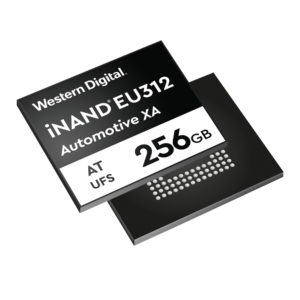Data is becoming increasingly valuable to automotive players as connectivity makes its way into both vehicles and urban architecture. Today, half of all new car sales are considered to be connected in some way. Trucks are heading that way too, and TomTom Telematics expects to see 37.9 million connected trucks on the road next year, a whopping 122% jump from 2015 levels.
It’s not just the number of connected vehicles that are growing, but also the amount of data they are each processing. From live traffic maps, dash cams and in-vehicle infotainment to over-the-air updates, vehicle-to-everything (V2X) communication and eventually autonomous driving—they all devour data. The floodgates could really open with the arrival of 5G, which by some estimates will facilitate data speeds up to 10 Gbps and latency as low as 1ms. But all of this data usage is opening up challenges around storage and management.
Data drivers
Solutions have evolved along with use cases and data requirements. “The automotive industry has seen considerable change with data storage,” observed Russ Ruben, WW Automotive Segment Marketing Director at data storage specialist Western Digital.

Thirty years ago the main place for storage was the navigation system, and transparencies were the go-to solution when the first automated automotive navigation systems launched in the early 1980s, but these were quickly replaced by cassette tapes. By 1987 the first CD-ROM navigation system had arrived on the market, followed ten years later by DVD systems. The new century saw the use of hard disc drives, SD cards and more recently eMMC (embedded Multi-Media Controller) packages.
But today’s data-storage requirements are shaped by much more than navigation systems. “The need for more storage is being driven broadly by connectivity and the move towards autonomous driving,” said Ruben. NAND flash is the most common solution, and the typical requirements for NAND storage use in modern vehicle are considerable. Telematics and V2X applications could consume anywhere between 8GB and 64GB, while infotainment consumes between 64GB and 256GB. Other major data drivers include ADAS (8-128GB), app stack or HMI (32GB), instrument cluster (8-64GB), dash cam (8-64GB), and augmented reality (16-128GB). Not everything can be sent to the cloud or transmitted to the network, and so storage requirements are hefty—up to 1TB, Western Digital estimates. And it will only continue to grow with the move towards self-driving vehicles.
Technical challenges
Clearly there’s a need for automotive sector data and its storage and transfer, but just how easy is it to provide that? Given the industry’s stringent reliability requirements and harsh operating environment, not very. “Back with the initial infotainment applications, a failure wouldn’t have been a big deal,” Ruben told Automotive World. “Sure it was inconvenient, and the system had to reboot itself. But today, as we move into more ADAS applications you have to make sure all devices are very reliable.” Ideally the automotive industry likes to see a DPPM (defective parts per million) of 0, which is a tough ask for the electronics sector. “We do all we can to get as close to 0 DPPM as possible,” assured Ruben.

The harsh driving environment also poses challenges for automotive-grade performance, particularly around extreme temperatures. While some applications such as infotainment have a cooling system to protect the parts from hot temperatures, others don’t. “If you touch a car that has been sitting in the sun all day, you know just how hot it can get. Now think what that means if there are telematics in the shark fin of the car. That won’t have a cooling system.” As a result, more customers are requiring automotive grade 2 specifications, with a greater range of operating temperature requirements.
Then there are the changes taking place around read- and write-intensive solid-state drives (SSD). A read-intensive SSD has lower endurance requirements for NAND flash memory than an SSD that handles write-intensive workloads. “When the main demand was for infotainment, we primarily saw a call for read-intensive, and not so many writes,” noted Ruben. “Now we have more systems that are write intensive, so we have to come up with products that can handle both read- and write- intensive scenarios. Since we don’t know what all the applications will be in the future, we have to think outside the box and make sure we have robust solutions that will last for whatever designs emerge down the line.”
Changing role

In the past, data storage companies like Western Digital would have little if any communications with the automakers that rely on the capabilities they provide. But that’s all changing. “Five or six years ago automakers would not care about talking to a storage company,” he pointed out. “They would talk to the Tier 1s, perhaps, and we would only concentrate on the SoC processor company. But now we find that more applications are using NAND flash storage and it has become a bigger part of the bill of materials. The automakers have to pay attention to this and are engaging with us more.” Much of that engagement entails educating companies on the strengths and weaknesses of NAND flash and how best to use it for their storage requirements.
“Automakers are also pulling some of the hardware design work in-house, rather than rely exclusively on Tier 1s,” he added. “We have to be engaged with them, as they help us understand and define future storage devices—the kind of interfaces they will be looking for as well as requirements around performance and power.” While Ruben welcomes the work with OEMs, as opposed to waiting for the specs to trickle down the supply chain, Tier 1s still represent the majority of Western Digital’s direct business, and they still handle most of the designs.
Demand outlook
New relationships and technical requirements are simply part of the wider revolution sweeping the mobility industry. For data storage specialists, these changes promise a thriving market and a lucrative future.
According to the NAND Quarterly Market Monitor, Q3 2020, Yole Développement (Yole), automotive bit demand will really skyrocket when SAE Level 3 autonomous features begin to proliferate. Today, with mostly Level 2 functionality on offer, Yole estimates the bit demand at 3 billion GB. This should jump to 31 billion GB by 2024 as Level 3 begins to take off, rising further to 97 billion GB by 2027 with the arrival of Level 5 robotaxis. In all, it anticipates a 270% CAGR from 2019 to 2027. “Not too many industries have growth rates like that,” noted Ruben. “The outlook for the data storage industry is awesome.”



